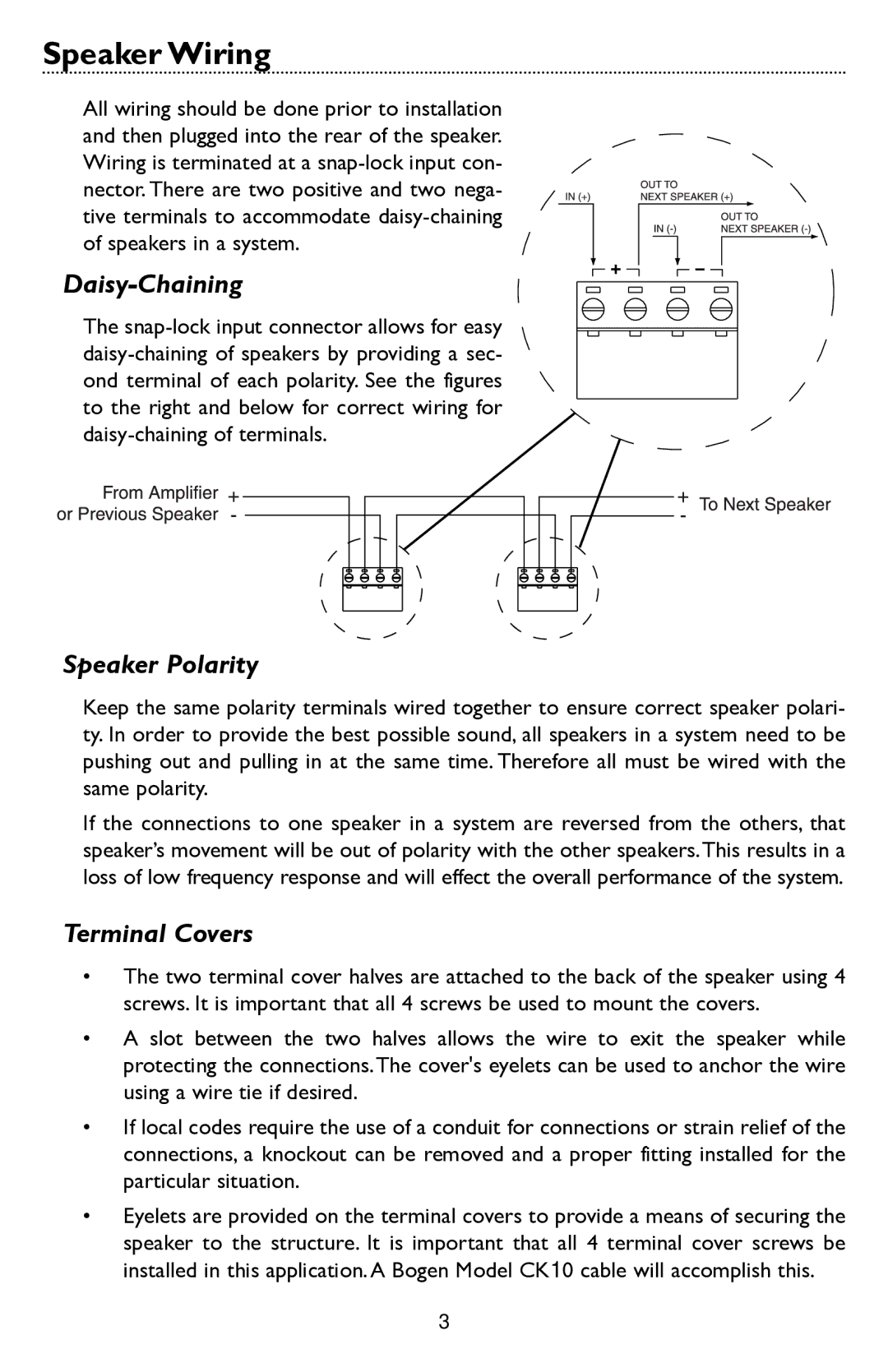
Speaker Wiring
All wiring should be done prior to installation and then plugged into the rear of the speaker. Wiring is terminated at a
Daisy-Chaining
The
Speaker Polarity
Keep the same polarity terminals wired together to ensure correct speaker polari- ty. In order to provide the best possible sound, all speakers in a system need to be pushing out and pulling in at the same time. Therefore all must be wired with the same polarity.
If the connections to one speaker in a system are reversed from the others, that speaker’s movement will be out of polarity with the other speakers.This results in a loss of low frequency response and will effect the overall performance of the system.
Terminal Covers
•The two terminal cover halves are attached to the back of the speaker using 4 screws. It is important that all 4 screws be used to mount the covers.
•A slot between the two halves allows the wire to exit the speaker while protecting the connections.The cover's eyelets can be used to anchor the wire using a wire tie if desired.
•If local codes require the use of a conduit for connections or strain relief of the connections, a knockout can be removed and a proper fitting installed for the particular situation.
•Eyelets are provided on the terminal covers to provide a means of securing the speaker to the structure. It is important that all 4 terminal cover screws be installed in this application. A Bogen Model CK10 cable will accomplish this.
3
